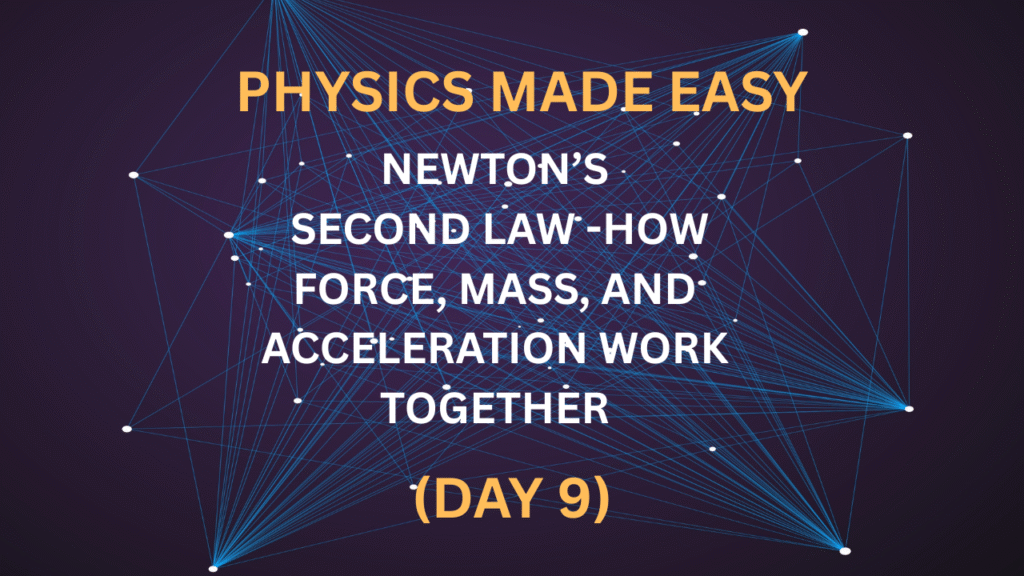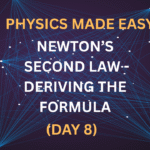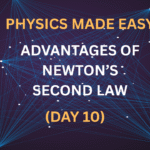🔄 The Core Relationship
Newton’s Second Law is all about one simple and powerful formula:
F = m × a
This formula tells us that force, mass, and acceleration are all connected. And here’s the best part — if you know any two of these quantities, you can find the third!
⚖️ Let’s Break It Down
🔸 1. Force and Acceleration (m constant)
When the mass stays the same:
- Applying more force means more acceleration.
- Applying less force means less acceleration.
🧪 Example:
Imagine pushing a shopping cart.
- A light push = it slowly rolls.
- A strong push = it speeds up quickly.
🔸 2. Mass and Acceleration (F constant)
When you apply the same force:
- A heavier object will accelerate less.
- A lighter object will accelerate more.
🧪 Example:
Pushing two carts:
- Empty cart = light mass, so it speeds up faster.
- Loaded cart = heavy mass, so it’s much slower to speed up.
🔸 3. Force and Mass (a constant)
If you want to achieve the same acceleration:
- A heavier object will require more force.
- A lighter object will require less force.
🧪 Example:
Pulling a child on a scooter vs. pulling an adult:
- The child is light, so little force is needed.
- The adult is heavy — you must pull much harder to match the same acceleration.
💡 Table of Relationships
| Scenario | Effect on Acceleration |
|---|---|
| ↑ Force, Mass constant | ↑ Acceleration |
| ↓ Force, Mass constant | ↓ Acceleration |
| ↑ Mass, Force constant | ↓ Acceleration |
| ↓ Mass, Force constant | ↑ Acceleration |
| ↑ Mass & ↑ Force (equally) | ↔ Acceleration stays the same |
🛠️ Real-Life Examples
✅ Kicking a Football vs. a Bowling Ball
Using the same kick:
- The football flies away because it’s light.
- The bowling ball hardly moves — its greater mass resists acceleration.
✅ Two People Riding Bicycles
Both pedal with the same strength:
- The lighter person speeds up faster.
- The heavier person accelerates slower.
✅ Driving a Car with Passengers vs. Alone
More passengers = more mass.
- The car will feel sluggish unless the engine provides more force.
🎯 Summary
Newton’s Second Law — F = m × a — shows the beautiful balance between force, mass, and acceleration. Whether you’re riding a bike, pushing a cart, or kicking a ball, this law is working in the background every time you move.
🚀 Ready to Explore More?
Have you noticed Newton’s Second Law in action today? Share your favorite real-life examples in the comments — and don’t forget to check out our next article on Newton’s Third Law, where action meets reaction!



